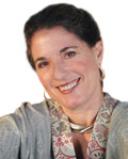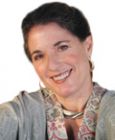
Trauma
The Power of Dance to Work with Trauma
Some events are too terrible for words.
Posted October 17, 2016
Some events are too terrible for words.
This is where dance comes in—an ancient and powerful way of expressing feelings.
Dance is also universal and universally understood. People can communicate with each other in local communities, and across the globe.
Dance organizes life in societies and cells in the body. It celebrates weddings, harvests, seasons, and can bring strength and comfort in times of grief.
In this article, Life, Death and Transformation: Keep Moving, three Turkish therapists learn how to use dance to express the affirmation of life in the face of death--(http://www.union-street-health-associates.com/articles/life_death_trans…)
In Jordan, I worked with a humanitarian organization called Common Bond Institute for a conference on intergenerational trauma, and just returned. I was worried about what I would see there and how I could help. We worked with widows and children who had basic needs met, but lacked psychosocial support.
One of the most powerful moments for me was being in a women’s group and belly-dancing with them. They showed such joy and renewed energy, and no words were needed to express and understand powerful primal experiences of being women together.
Several of them asked for individual sessions in which they were able to tell their stories and express difficult situations and emotions.
The medical students also understood the power of ritual for community healing. They had adapted a form of the now-popular dance called HAKA. This was originally a war dance from the Maori people of Australia. It has been used recently by soccer teams to psych themselves up for the game, and the medical students had adapted a less aggressive version for their group meetings. The leaders of that association and I collaborated on a variation of that dance as part of the opening circle for the conference. In addition, I introduced a simple circle dance step that is universal in many cultures.
The situation of the Syrian refugees can bring up strong feelings of helplessness, and the desire to do something. Finding a way to help was truly a blessing—and we all felt it.

